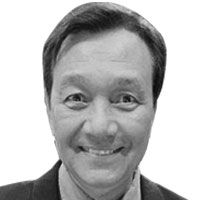Can high-fives be avoided?

Basketball is an emotional game. When Anthony Davis hit a three-pointer at the buzzer to lift the Los Angeles Lakers to a 105-103 win over Denver in the NBA playoffs a few weeks ago, there was spontaneous body-bumping, high-fiving and hugging. It’s something you expect coming out of an almost impossible situation to steal a victory. Anyone who hits a big shot with the outcome on the line is a target of serious physical celebration.
For sure, there will be cases of buzzer-beaters or big shot moments when the PBA restarts its 45th season at the Clark bubble on Oct. 11. But under IATF guidelines, high-fives and other types of close contact will be discouraged during a game. Even fist-bumps will be frowned on. Every player on the bench is required to wear a face mask, regardless of whether he’s fresh from the court or not. Only the 10 players and three referees on the court are exempt from wearing a face mask.
In the NBA, players and coaches on the bench aren’t required to wear a face mask. Some coaches put on and remove their face masks as necessary. When they shout out instructions from the sidelines, the face masks are lowered, obviously so they can be heard better. When players return to the bench on a sub, they’re often catching their breath and spared from wearing a face mask. In the PBA, they’ll be required to wear a face mask even as they’re huffing and puffing while coming off the court. Coaches must learn how to be heard wearing a face mask.
PBA commissioner Willie Marcial says there will be no technical fouls on players who do body-bumps or high-fives, particularly on big shot moments. However, they’ll be reminded of the IATF protocols. Bases Conversion and Development Authority CEO and chief testing czar of the National Task Force Against COVID-19 secretary Vince Dizon says he appreciates the nature of the game and how players react emotionally to big shot moments. All he’s asking for is awareness that the acts are discouraged. “It’s like us in the new normal in this pandemic, always thinking about not shaking hands and instead doing an elbow bump,” he explains. “Noong una, medyo mahirap. Muscle memory yung kakamayan mo. Pero yun ang purpose natin, to discourage and hopefully masanay na rin yung mga players.” Marcial says there are no penalties for “violations.” “Kasi nasa protocol, susundin namin yan,” he adds. “Sa una pagsasabihan muna natin na iwasan. Pero pag buzzer-beater, di ba mae-excite yan? So pipilitin natin na huwag nilang gawin.”
Marcial says the PBA is mandated to follow the IATF guidelines. Without the IATF, the PBA wouldn’t be able to restart. And a condition to restart is following the IATF guidelines. It’s strange that high-fives and body-bumps are discouraged when basketball is clearly a contact sport where social distancing just can’t be practiced. You can’t expect players to play soft because physicality is part of the game. So if there’s bumping and grinding on the court, what’s the relevance of discouraging body-bumps and high-fives? The players are all COVID-free anyway and the Angeles University Foundation fourth floor gym, the site of the competition, will be well-sanitized.
It’s understandable why the IATF is overly strict to the extreme. It only wants to protect everyone in the bubble and justify approving the season restart. It’s also understandable why the PBA isn’t questioning the “unnatural” restrictions on high-fives and body-bumps – the goal is to restart and once the season is back on track, it’ll be easier to appeal to the IATF to relax restrictions if found to be unnecessarily limiting and unrealistic. In the meantime, let’s all move forward on the same page, in the same direction to get the ball rolling.
- Latest
- Trending





























